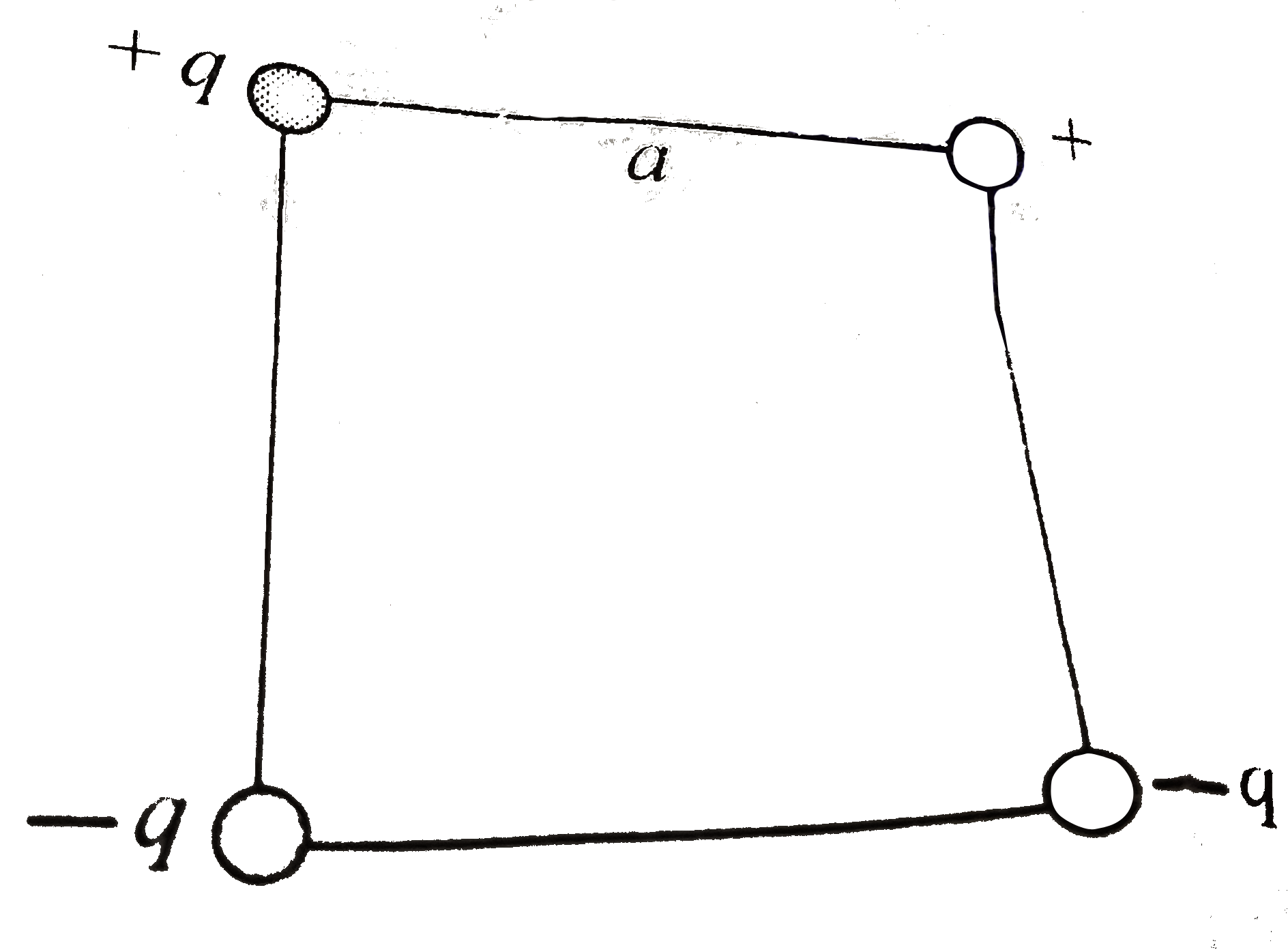State whether the electric potential at the center of the squares shown in Fig. (i) and (ii) is same or different.
If r is the distance of the center of the square from each corner, then electric potential at the center of square. ABCD

V=VA+VB+VC+VD
Q4π∈0r−Q4π∈0r+Q4π∈0r+Q4π∈0r
= 0
Hence electric potential at the center of both the squares is same.
Similar Questions
Knowledge Check
The r.m.s. value of potential difference V shown in Fig. is
 AV0BV0/2CV0/√2DV0/√3
AV0BV0/2CV0/√2DV0/√3Four charges are placed at four corners of a square as shown in figure. The side of the square is a. Two charges are positive and two are negative, but their magnitudes are the same. Now, an external agent starts decreasing all the sides of the square slowly and at the same rate. What happens to the electrical potential energy of the system and what will be the nature of work done by the agent?
 Aincreases, positiveBincreases, negativeCdecreases, negativeDdecreases, positive
Aincreases, positiveBincreases, negativeCdecreases, negativeDdecreases, positive
What is the electric potential at point P, located at the center of the square of charged particles shown in Fig. 24-16a? The distanced is 1.3 m, and the charges are
q1=+12nC, q3=+31nC,
q2=−24nC, q4=+17nC.
View SolutionWhat are the magnitude and direction of the electric field at center of the square in Fig, if q = 1.0xx10^(-8) C and a = 5.0 cm ?

View SolutionFind the center of mass of a uniform plate shown in Fig. 7.10a.

View SolutionCalculate the current through the circuit and the potential difference across the diode shown in Fig. The drift current for the diode is 30μA.

View SolutionA point charge +10μC is at distance of 5cm directly above the center of a square of side 10 cm as shown in Fig. What is the magnitude of the electric flux through the square ? (Hint. Think of the square of the square as one face of a cube with edge 10 cm)

View SolutionFind the electric field at the center of the sphere due to the induced charges on the surface of the sphere, as shown in Fig. 22-30.

View Solution

